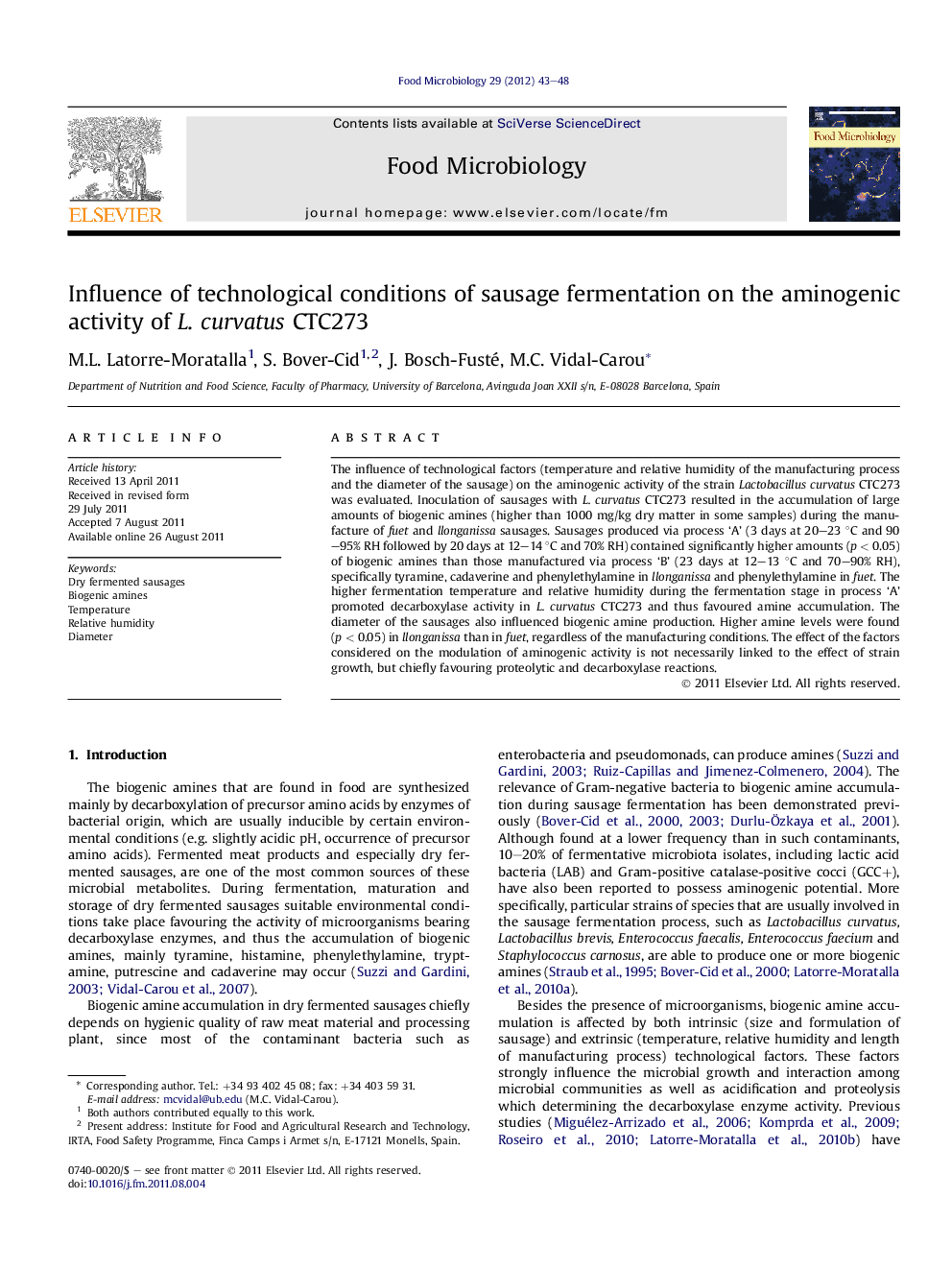| Article ID | Journal | Published Year | Pages | File Type |
|---|---|---|---|---|
| 4363187 | Food Microbiology | 2012 | 6 Pages |
The influence of technological factors (temperature and relative humidity of the manufacturing process and the diameter of the sausage) on the aminogenic activity of the strain Lactobacillus curvatus CTC273 was evaluated. Inoculation of sausages with L. curvatus CTC273 resulted in the accumulation of large amounts of biogenic amines (higher than 1000 mg/kg dry matter in some samples) during the manufacture of fuet and llonganissa sausages. Sausages produced via process ‘A’ (3 days at 20–23 °C and 90–95% RH followed by 20 days at 12–14 °C and 70% RH) contained significantly higher amounts (p < 0.05) of biogenic amines than those manufactured via process ‘B’ (23 days at 12–13 °C and 70–90% RH), specifically tyramine, cadaverine and phenylethylamine in llonganissa and phenylethylamine in fuet. The higher fermentation temperature and relative humidity during the fermentation stage in process ‘A’ promoted decarboxylase activity in L. curvatus CTC273 and thus favoured amine accumulation. The diameter of the sausages also influenced biogenic amine production. Higher amine levels were found (p < 0.05) in llonganissa than in fuet, regardless of the manufacturing conditions. The effect of the factors considered on the modulation of aminogenic activity is not necessarily linked to the effect of strain growth, but chiefly favouring proteolytic and decarboxylase reactions.
► Technological conditions influence aminogenic activity of L. curvatus CTC273. ► Decarboxylase reactions were enhanced by high temperature of fermentation. ► Biogenic amine formation was higher in the larger diameter sausages.
